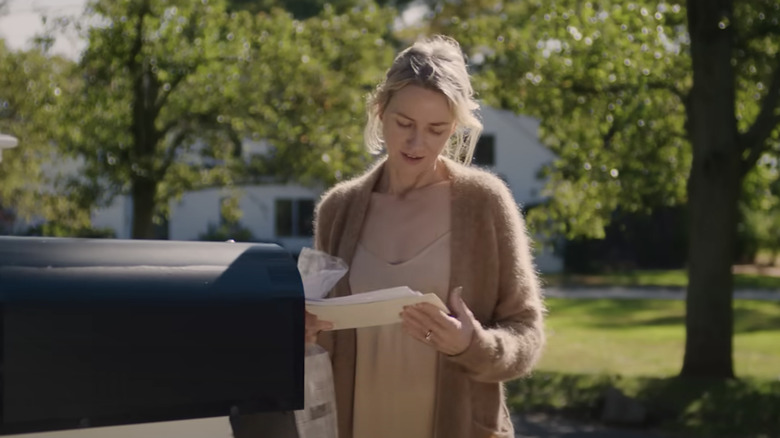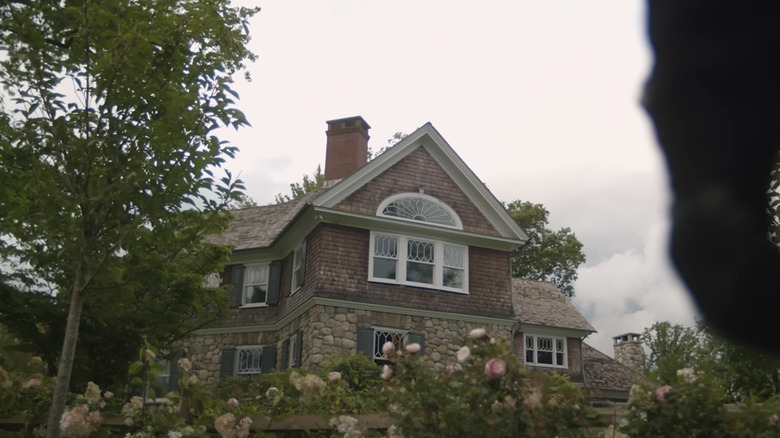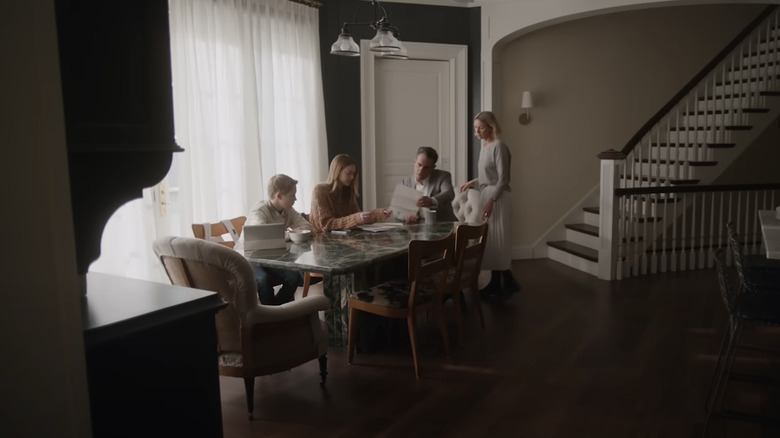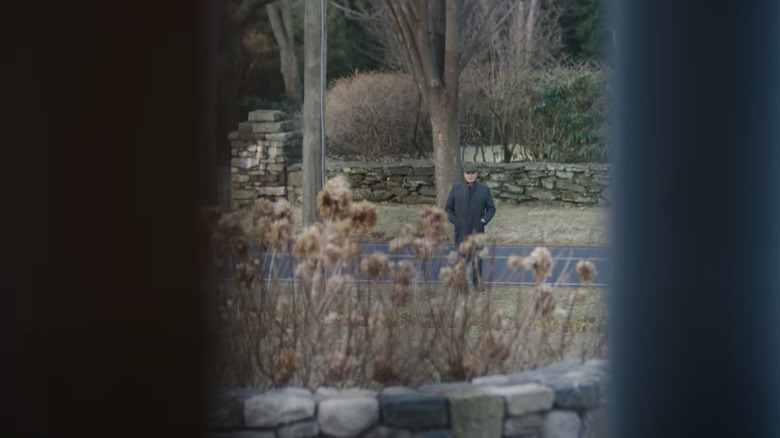The Watcher True Story: Did The Events Of The Creepy New Netflix Show Really Happen?
Potential spoilers for "The Watcher" follow.
Between "Dahmer" and "The Watcher," Netflix's recent wave of true crime shows are getting a lot of attention. After all, there's just something deeply chilling about watching real-life cases play out. As someone who has zero tolerance for horror and still remembers being terrified when a middle school teacher forced my class to watch Disney's "The Watcher in the Woods" (I probably spent half the movie hiding in the bathroom — so much for movies in class being fun), true crime brings its own unnerving addition: the knowledge that the events on-screen could happen to just about anyone.
But while the Jeffrey Dahmer murders have been recounted time and time again (though admittedly in particularly poor taste this time, with the Netflix series featuring recreations of disturbing scenes that victims' family members were not notified of), "The Watcher" is based on a relatively unknown case: the stalking and harassment of the Broaddus family (renamed Brannock in the show). Not only does the unfamiliarity bring a new level of discomfort, but it also begs a big question: just how much of Netflix's show is true?
The real-life Watcher is terrifying
Both the real-life Broaddus family and their fictional counterparts, the Brannocks, went through a considerable ordeal thanks to their new home. The Broaddus and Brannock families both received letters signed by "The Watcher," a mysterious figure who claimed to have watched their new home, 657 Boulevard, for years. But in real life, the first letter was somewhat friendly — if also ridiculously unnerving:
Dearest new neighbor at 657 Boulevard,
Allow me to welcome you to the neighborhood. How did you end up here? Did 657 Boulevard call to you with its force within? 657 Boulevard has been the subject of my family for decades now and as it approaches its 110th birthday, I have been put in charge of watching and waiting for its second coming. ... Do you know the history of the house? Do you know what lies within the walls of 657 Boulevard? Why are you here? I will find out.
As time went on, the letters became more threatening. The Watcher was happy that the Broaddus family had three children — "young blood" — and promised that "Once I know their names I will call to them and draw them too [sic] me." Understandably, the family was deeply troubled. Police became involved, and David Broaddus launched his own investigation. At first, The Watcher simply taunted him. But as the story began to receive more media attention, the letters became more threatening:
"Maybe a car accident. Maybe a fire. Maybe something as simple as a mild illness that never seems to go away but makes you fell [sic] sick day after day after day after day after day. Maybe the mysterious death of a pet. Loved ones suddenly die. Planes and cars and bicycles crash. Bones break."
The family was on their own
The letters that the Broaddus family received were undeniably terrifying, but the lack of response was even more chilling. Both the Broaddus and Brannock families reached out to the police but found them to be of little help (when David Broaddus would visit the police, he was frequently advised to just go home). In fact, the police didn't even bother to interview some of the Broaddus' neighbors in their search for the Watcher. Similarly, when a saliva sample was found on an envelope, the police checked for matches against neighbors' voluntarily provided DNA samples but shut down the family's offers to pay out of pocket for forensic genealogy testing.
Much like their fictional counterparts, the Broaddus family did hire a private detective (and to be fair, the real-life investigator helped identify a few threats in the area, including two registered sex offenders). However, while the fictional detective Theodora Birch (Noma Dumezweni) threw herself at the case completely and even sacrificed her own reputation to bring the family peace, the Broaddus family seemed to weather much more of the investigation's brunt on their own.
Netflix took some big creative liberties
"The Watcher" may ring incredibly true to the Broaddus family's ordeal, but Netflix did make a few changes when adapting the story. The most important differences were at the Broaddus family's request: already traumatized by the ordeal, they stipulated that the on-screen family should have a different last name and not directly resemble their own (this is likely why the Brannocks only have two kids despite the fact that the Broadduses have three children).
That being said, Netflix also made a couple of plot tweaks: although the Broaddus family was too shaken by the whole ordeal to move into their new home (and understandably so), the Brannocks did move in — a decision that made it easier to show terrifying interactions with neighbors. Similarly, the Brannocks paid way more for 657 Boulevard than the Broadduses did: the home cost $3,200,000 on the show but only $1,350,000 in real life. Unfortunately, though, the show's ambiguous ending was not something that creators Ryan Murphy and Ian Brennan cooked up. To this day, the identity of the real-life Watcher is still unknown.
"The Watcher" is now streaming on Netflix.



